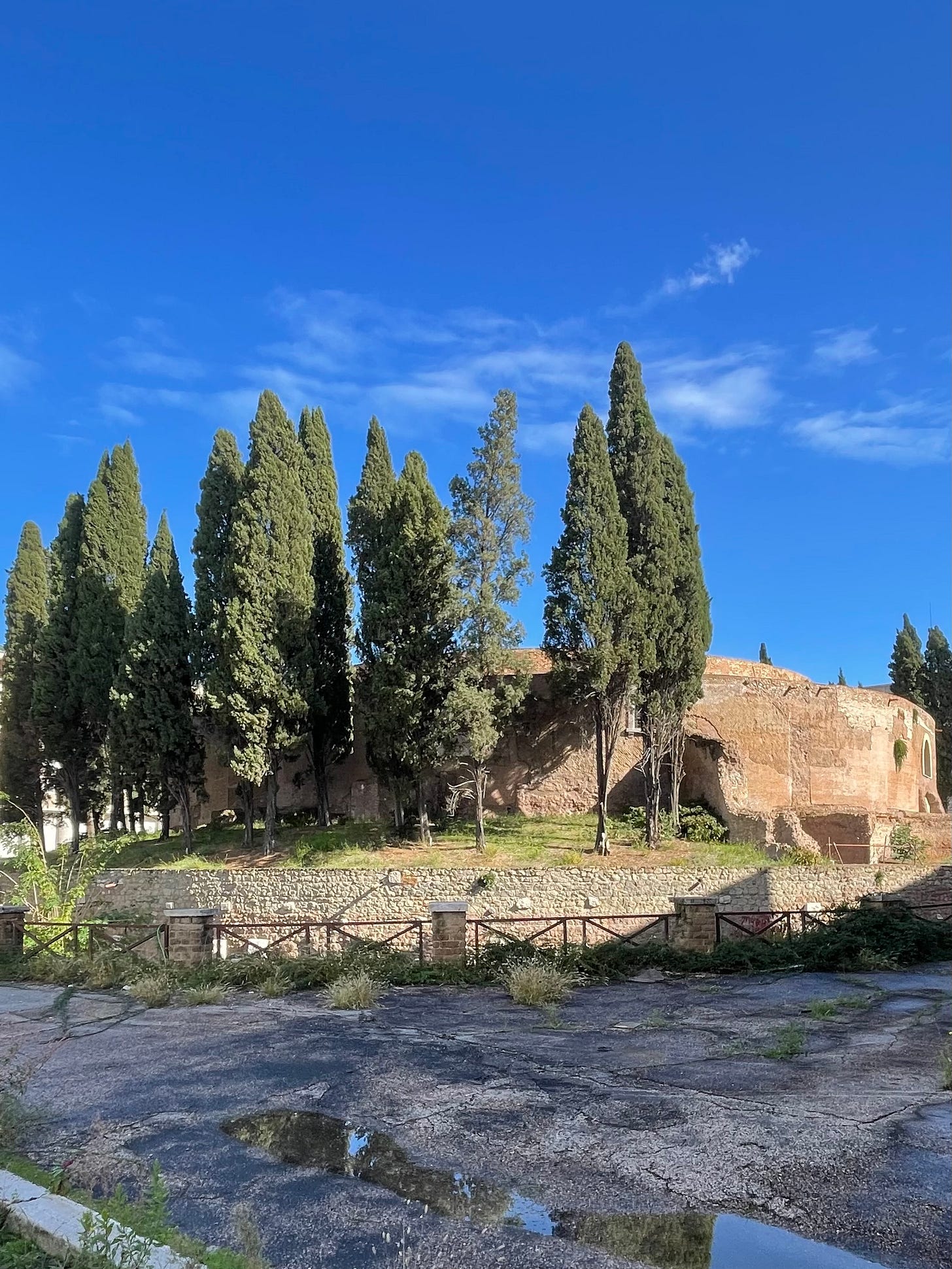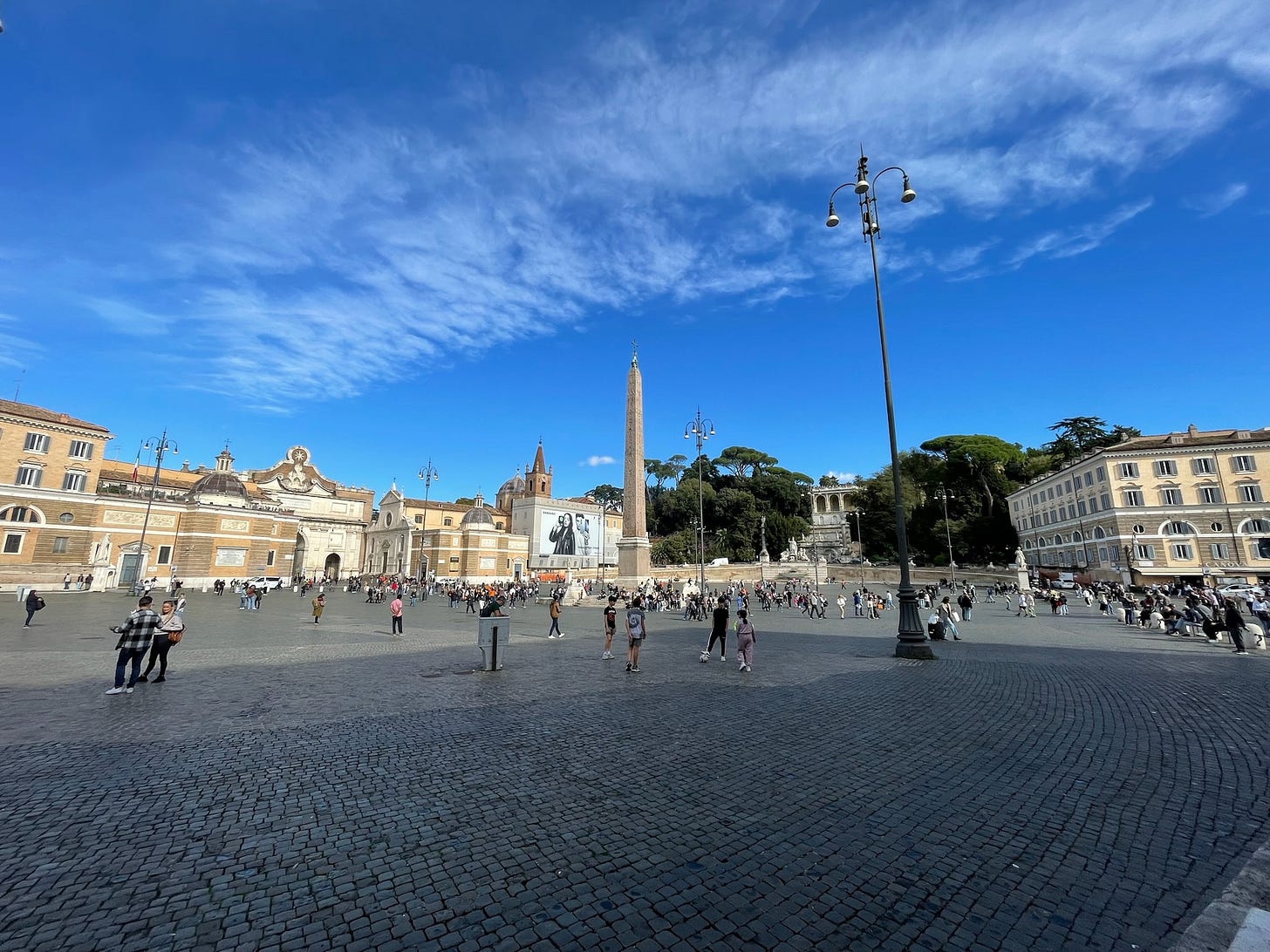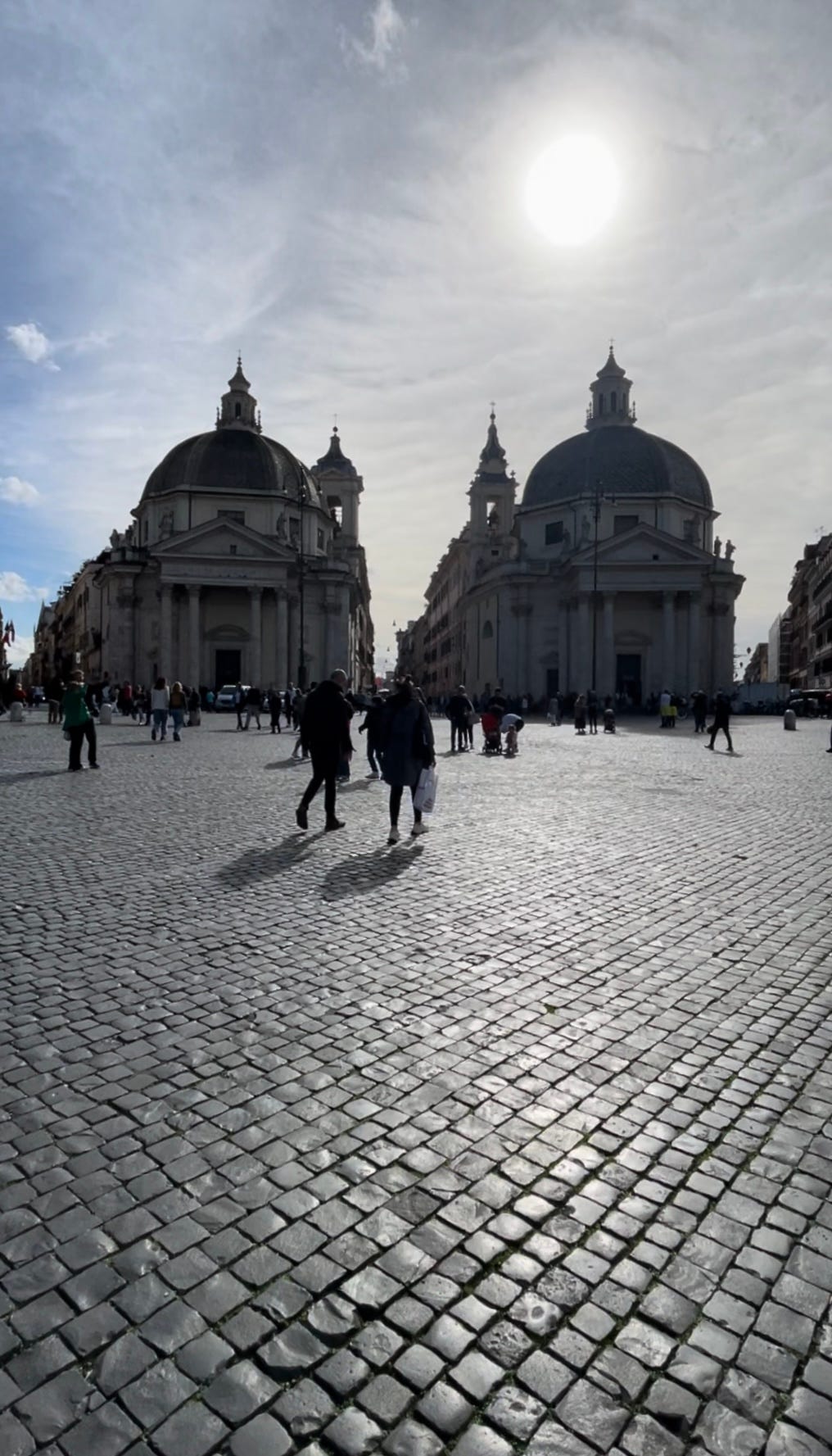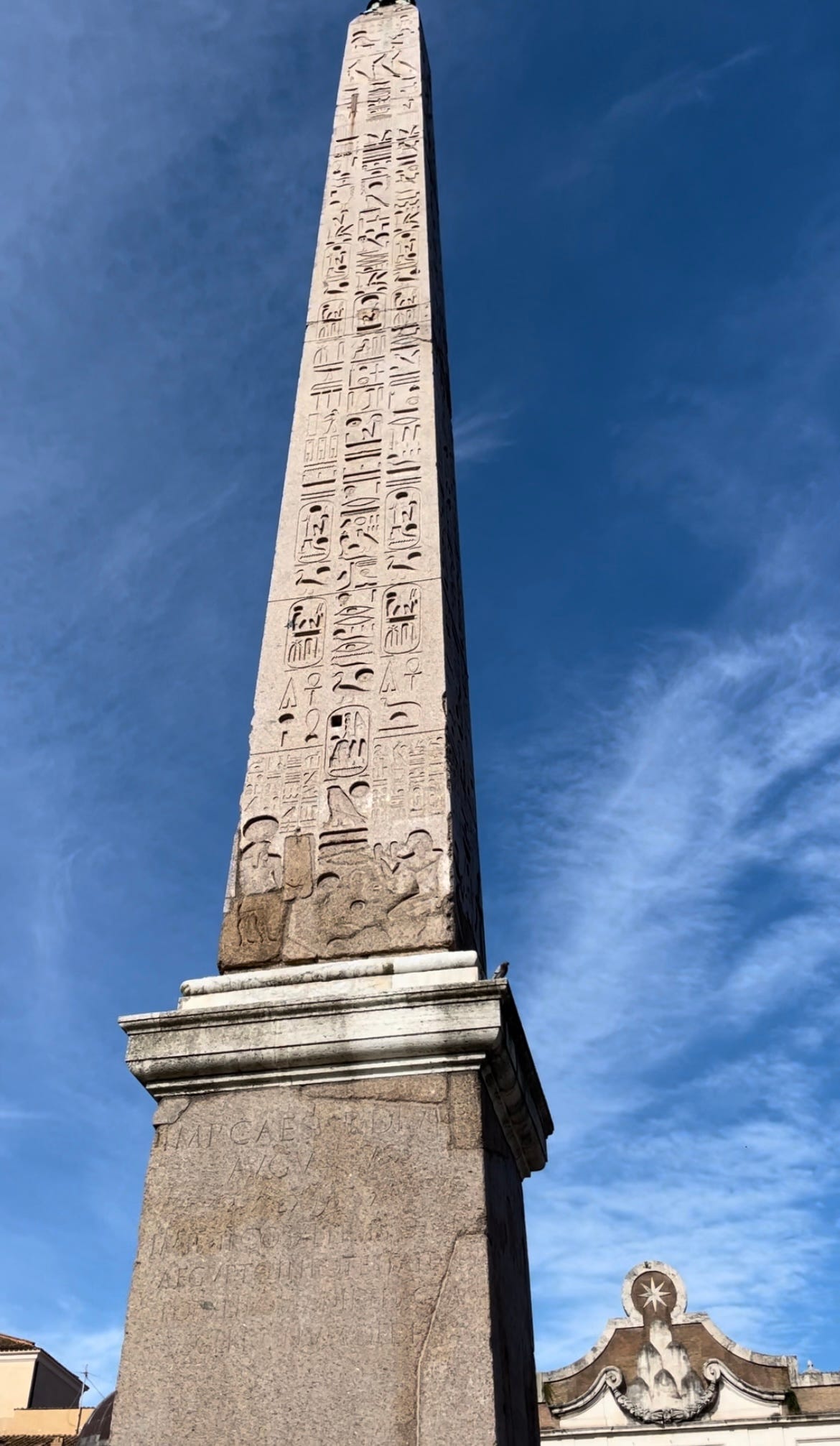Piazza del Popolo
A walk from Ara Pacis Augustae to the Northern Gate of Rome, and Sunday Share
Via di Ripetta lies just to the east of the Ara Pacis Augustae, away from the Tiber, and just west of the ruins of the Mausoleo di Augusto.
Augustus’ Mausoleum, above, is currently closed. Walk past it to the north, leaving it on your right, and proceed down this historic street. Going south the street lies between the Pantheon and Piazza Navona. The Via di Ripetta is the western street of the three streets which make up the Tridente.
The walk from here to the Piazza Popolo is only 600 meters, less than a ten minute walk. In the time of Augustus this was all outside the city walls, in Campus Martius, but by the third century AD Rome had grown far beyond. Romans were proud of the fact that Rome needed no walls to protect it, but when barbaric tribes began to invade northern Italy, the Aurelian Walls were constructed. The work began in 271 AD and was completed by 275 AD.
This 2 1/2 minute video will give you a good perspective of this lovely piazza.
The current layout of the piazza was designed by architect Giuseppe Valarie and finished in 1822. The gate leads to the beginning of the Via Flaminia, the main road to the north. It was this road that Martin Luther took on his 700 mile walk to Rome in 1520-1521.
After Luther, or any of the other pilgrims, entered the main gate and crossed the plaza there were three roads that lead to the south, divided by two churches.
The right road, Via del Ripetta, eventually leads to the Vatican. The left road, Via del Babuino, leads to the Piazza di Spagna, at the bottom of the Spanish Steps. The center street, Via del Corso, leads to the forum and the Capitoline Hill. Together these three streets form a trident, il Tridente.
In the center stands an Egyptian obelisk, imported by Augustus in 10 BCE, one of the tallest and oldest in Rome. Originally set up in the Circus Maximus, it was repurposed here in 1589 AD.
Matching fountains were designed by Giovanni Ceccarini, completed in 1823. The fountain to the east shows the central figure of Dea Roma (the female deity who personified Rome - see the she-wolf feeding Romulus and Remus at her feet?) flanked by two river gods, the Tiber and the Aniene. (We will see similar river god sculptures tomorrow in a fountain at Piazza Navona.) This fountain was at the terminus of an acqueduct. Above this fountain way up high is the Pincio Terrace, which offers one of the best views of Rome. This is where budding Romeo’s often propose. It can be reached through the Borgess gardens or by climbing the steps from the Piazza.
To the west stands the Fontana del Nettuno. Neptune stands with his trident, accompanied by two tritons, gods of the sea.
OK, time to take a break! If you can find an open table at the south end of the piazza grab it and order up your favorite aperitif! Ours is an Aperol Spritz! They will add 20% to your bill and the food isn’t that great, but we are here for the vibe!
Refreshed and energized, we headed up to the Borghese Gardens. More on that in my next post.
Sunday Share:
For those of you who enjoy nature photography and birding, I highly recommend Karen Davis’s In the Whirlwind!
Most of you probably already follow Heather Cox Richardson, Letters from an American, but if you don’t you should check her column out. It is a daily must read for me.
Finally, check out The Dolphin of Hippo, by CSMFHT, for an interesting glimpse into the Roman colony of Hippo in the 1st Century.
Thanks for sharing this journey! Ciao~!













Love the Egyptian obilesque and the Neptune fountain. And so much more in the eternal city. The photos are gorgeous and bring back nice memories.